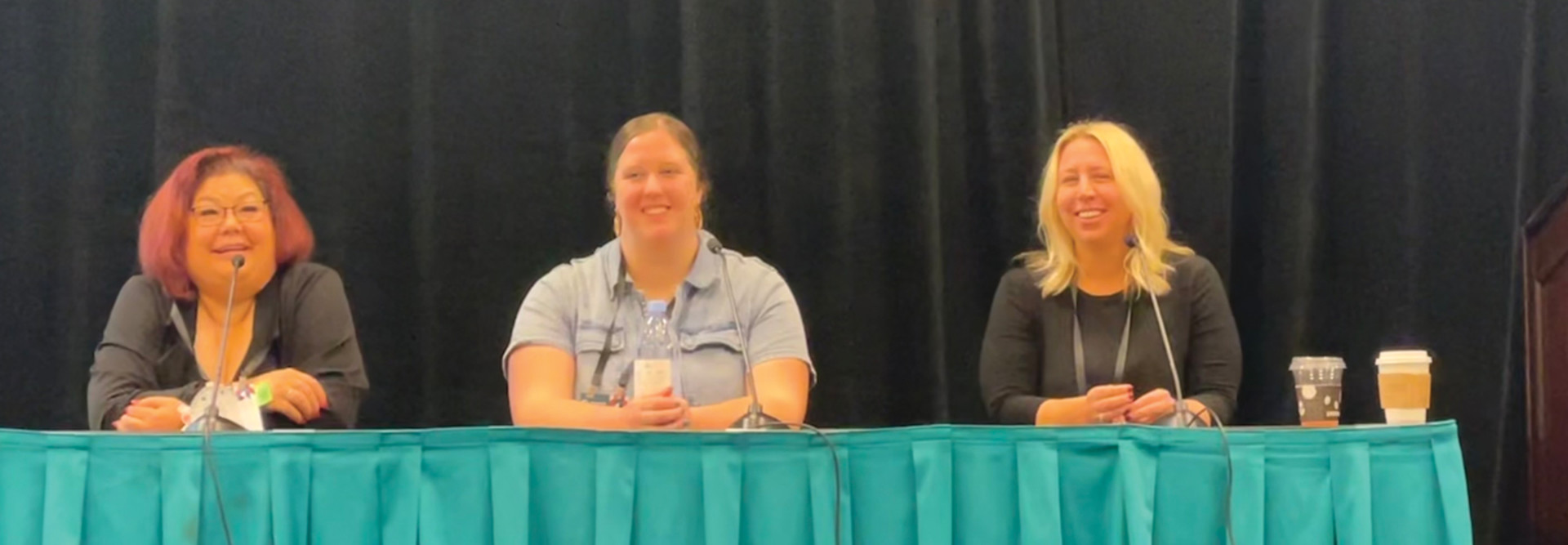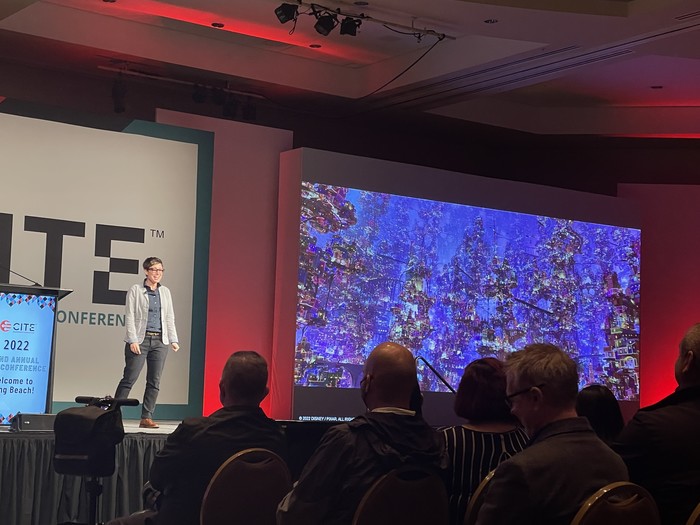Danielle Feinberg, Visual Effects Supervisor at Pixar Animation Studios, demonstrates the effects of lighting in an animated film with a scene from “Coco.”
With each challenge, Feinberg and her team rose to the occasion, often under tight deadlines. After the success of “Coco,” she applied for the visual effects supervisor position on the movie “Turning Red.”
“This has typically been a very, very technical job, and I’m not very technical. People tend to think of lighting as one of the less technical jobs,” she explained.
However, the new film’s director was Domee Shi, who had just won an Oscar for her work on the short film “Bao,” and rumors were circulating that Shi wanted the new feature to be a combination of art and technology. “So, I decided to apply,” Feinberg said.
She got the job and added that the first thing she did was stick out her neck and recommend the use of a new technology, which turned out to be so successful for animating bodily movement that the team decided to use it for facial expressions as well.
On Wednesday, panelists spoke about the discrepancies in women and men applying for jobs, citing a survey that found women typically will apply only for positions they’re 100 percent qualified for.
“I know I can do this, so I feel confident now applying for those jobs, and I want to integrate that into my own female coworkers’ minds,” said Lisa DeLapo, director of informational and instructional technology at Union School District in San Jose, Calif. “I feel like they’ll never try because they don’t feel qualified, and they are.”
Hiring Practices Need to Change to Include Women and Minorities
Participants in the women in tech panel also talked about the changes they can make from within an organization to support hiring and retention practices.
“When you start looking at people’s resumes and comparing what you’re hiring for, what are the things on that list that are essential? What are the things that would be nice? What could be taught?” Flewelling asked. She also pointed out that many responsibilities are collaborative and won’t need to be handled solely by a new hire.
LEARN MORE: What does it take for women in K–12 to make it to the top?
“You have to engage your HR department,” added an audience member after raising his hand. “If you’re not proactive with them, they will overlook potential candidates because of their own bias.”
From the corporate side, Danielle Pinta, program manager for Google for Education, said she’s already seeing the effect of companies mentoring and hiring candidates more thoughtfully. “I’ve been in positions numerous times where I’m the only woman in a room full of men, and over the last five years I’ve started to see that shift. Whenever I do see it shift, it feels really good.”
Pinta pointed to the programs Google has around hiring minorities as a way tech companies are moving in the right direction.
Bookmark this page to stay up to date with our CITE 2022 conference coverage, and join the conversation on Twitter when you follow @EdTech_K12 and use the hashtag #CITE2022.












